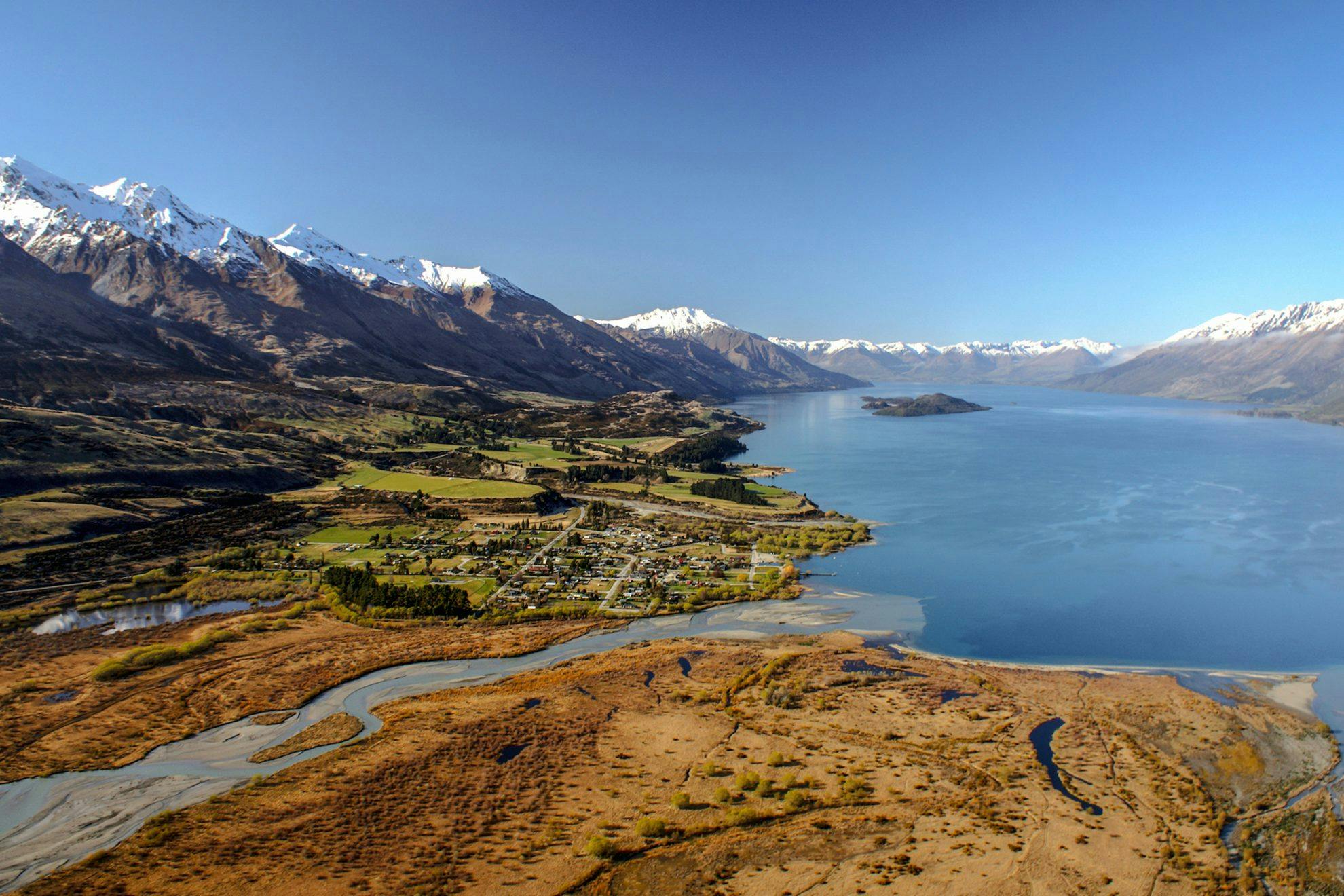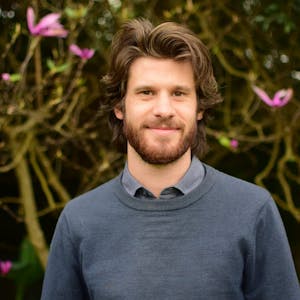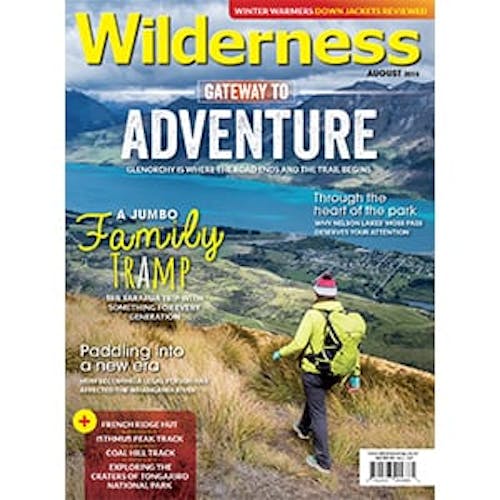Glenorchy is the gateway to the Southern Alps and some of New Zealand’s best tramping country, but what is life like at the end of the road, and the start of the trail? George Driver finds out
It’s a dead-end for vehicles, but for trampers it’s just the beginning. Few towns boast such rich country for exploration: the Routeburn Track Great Walk, the Rees-Dart, Greenstone-Caples, Cascade Saddle and backcountry gems like the Rock Burn, Earnslaw Burn, Lochnagar, Lake Unknown – it’s endless.
Despite being just a 40-minute drive from Queenstown, Glenorchy has developed a strong sense of identity. The long windy road has acted as a buffer to the world and the town exudes ingenuity and eccentricity. Backyards are festooned with abandoned and budding projects, from boats to bivvys to buses. Children plod down the quiet streets on horseback. But, as many locals have commented, ‘the world has discovered Glenorchy’ and it feels like that identity is changing.
Tourism and tramping have been part of life in the town for more than 150 years and it has long attracted a range of characters – wealthy pioneers looking for a bolthole to see out their days, miners hoping to make their fortune, and, more recently, tech-billionaires looking to show the world a sustainable future.
One of the pioneers of the tourism industry was Richard Bryant, an Englishman and jack-of-all-trades. He worked as a gold miner, policeman, harbourmaster, barkeep and, finally, tourism trailblazer. He opened Glacier Hotel in 1868 in Kinloch, at first catering for sawmillers in the town, but later pivoting to tourism when steamships began plying Lake Wakatipu. By the 1880s, it was hosting up to 245 guests a year. The Routeburn was the main attraction, even then, and the Bryants started guiding the valley – a role the family held for five generations and more than a century.
One hundred and fifty years later, the hotel is still catering for guests heading for the hills. The Bryant dynasty ended in 2002 when the hotel, since renamed Kinloch Lodge, was sold to Toni and John Glover after the couple stumbled on the opportunity on a short visit.
At the time, John, a Brit, had recently left a high-pressure job as a health inspector in England, while Toni was working as a travel consultant in Auckland. The couple met while John was on a working holiday in New Zealand, managing the Ngauruhoe Ski Lodge.
Wanting to start a life together in the mountains, they flew to Queenstown for a skiing/research trip and found Kinloch Lodge was for sale. Toni recalls it was looking every bit of its age.
“It was full of holes and graffiti and infested with rats and mice,” Toni says. “It was only operating for school camps, but even a lot of them had stopped coming.”
After buying it, they moved into one of the bunkrooms – which was originally a workcamp for the Manapouri Power Station – and set about renovating the lodge and backpackers. Seventeen years on, it now boasts a thriving, quaint restaurant, the heritage lodge has been restored and the bunkrooms accommodate hundreds of walkers before and after a tramp. Nestled in a nook of Lake Wakatipu, near the mouth of the braided Dart River, it’s still an iconic site.
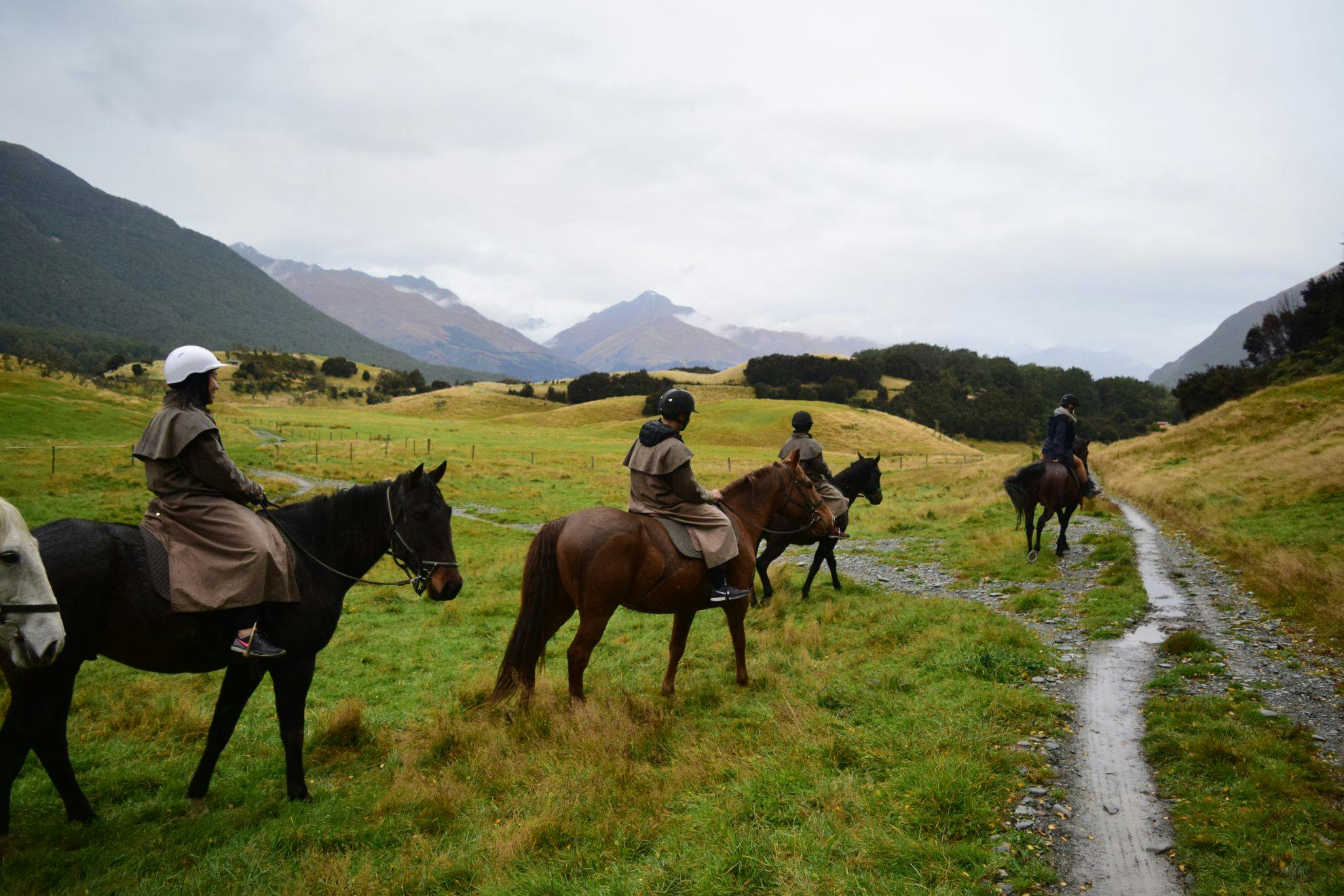
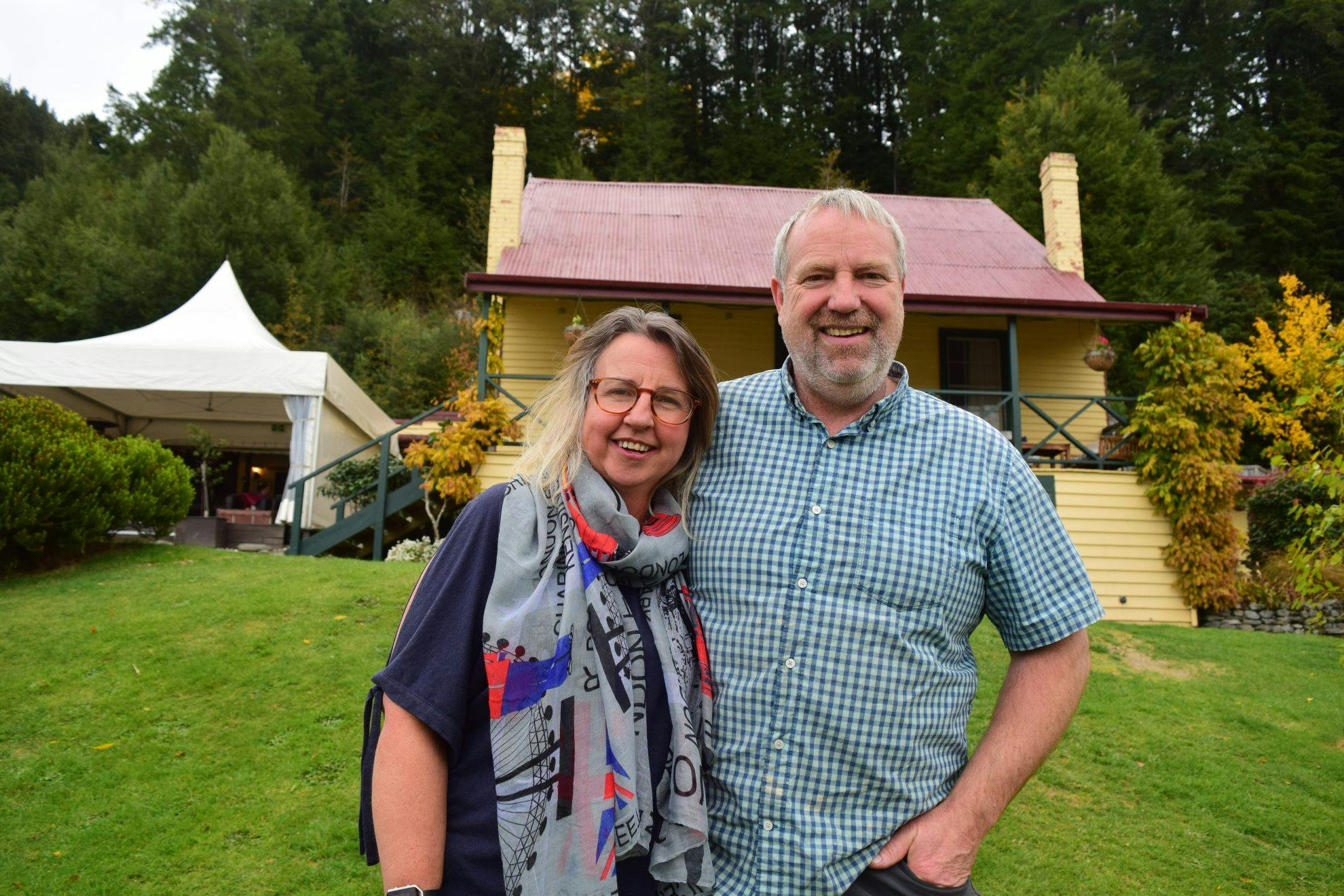
The other mainstay of tourism and tramping in the region is Paradise, up the Dart Valley beside the picturesque Diamond Lake. The property is surrounded by beech forest, against the northern flank of Mt Alfred, and looks onto the western face of Mt Earnslaw, down valley to the glaciated Barrier Range, and the Cosmos Peaks guarding the valley head. A few kilometres from the start of the Dart Track, it’s also a popular stop-over for trampers.
Concerted trapping projects, working alongside the Routeburn Dart Wildlife Trust, mean bellbirds, tui, and even native bats are common sights and sounds at Paradise.
The sprawling 128ha property has eight cabins, many of which are over 100 years old, including one that originally served as a school for a small scheelite mining community. It also features several historic cottages.
Like Kinloch, Paradise has a fascinating genesis. It was founded by colonial pioneer and statesman William Mason, who was appointed New Zealand’s first government architect in 1840. His oeuvre includes the first Government House in Auckland and Dunedin’s revered, and later demolished Exchange Building. He was also an MP for Auckland and the first mayor of Dunedin. Mason built Paradise House in 1883 as a retirement plan and added a guesthouse as a tourism venture. Punters would take a two-hour horse buggy from Glenorchy and stay at the guest house while exploring the alpine valleys.
Paradise House would be the last building Mason ever designed. He left the top of the lake in 1890 due to poor health and died in Dunedin seven years later. But the property has been a tramping hub ever since. It was taken over by farm managers David and Jane Aitken and the family managed it for the next 50 years, starting some of the first guided walks in the region, attracting thousands of visitors. Eventually, in 1949, the property was purchased by Thomas Miller, a farmer and businessman originally from Bermuda. It stayed with the Millers for nearly 50 years and continued to accommodate visitors seeking an alpine getaway.
But in the 1990s, Paradise was nearly lost. Thomas’ surviving son David was running the guest house and farm, but when he was diagnosed with a terminal illness he became concerned the property would be divided up by developers after his death. So he offered to sell it for a dollar to the person who had the best idea for its future. The offer gained international attention, but eventually Miller decided to form a not-for-profit, the Paradise Trust, to manage the property and ensure Paradise was preserved.
Twenty years later, that spirit endures. Many of the cabins have remained unchanged from when they were first built and have been a cornerstone of family holidays for generations – families who are fiercely protective of its preservation.
“If I replace a chair or change anything, people know, so we try to keep it all as original as possible,” says trust manager Mandy Groshinski.
Groshinski says Paradise continues to offer an accessible and affordable wilderness experience.
“It’s not about keeping up with the Joneses. The whole ethos is to slow down.”
Many of the cabins have no electricity, some can only be accessed on foot and the price has been kept low, at $45 a person.
Groshinski says the goal is to keep it under the radar. There is a miniscule, moss-covered sign at the entrance, and there is no marketing budget.
“We want people here because they appreciate Paradise, not hordes of people coming because they’ve seen it in a film.”
Groshinski has been managing the trust for eight years. She previously worked a string of jobs in nature-tourism; including managing Martin’s Bay Lodge on the Hollyford Track and guiding on Stewart Island and on the Hump Ridge Track. She saw the job of trust manager advertised in the paper, and drove up to check it out.
“I got as far as Diamond Lake and thought ‘I’ve got to get this job’. It still wow’s me every day.
“It’s so special to be a guardian of this place that has been gifted to the people of New Zealand.”
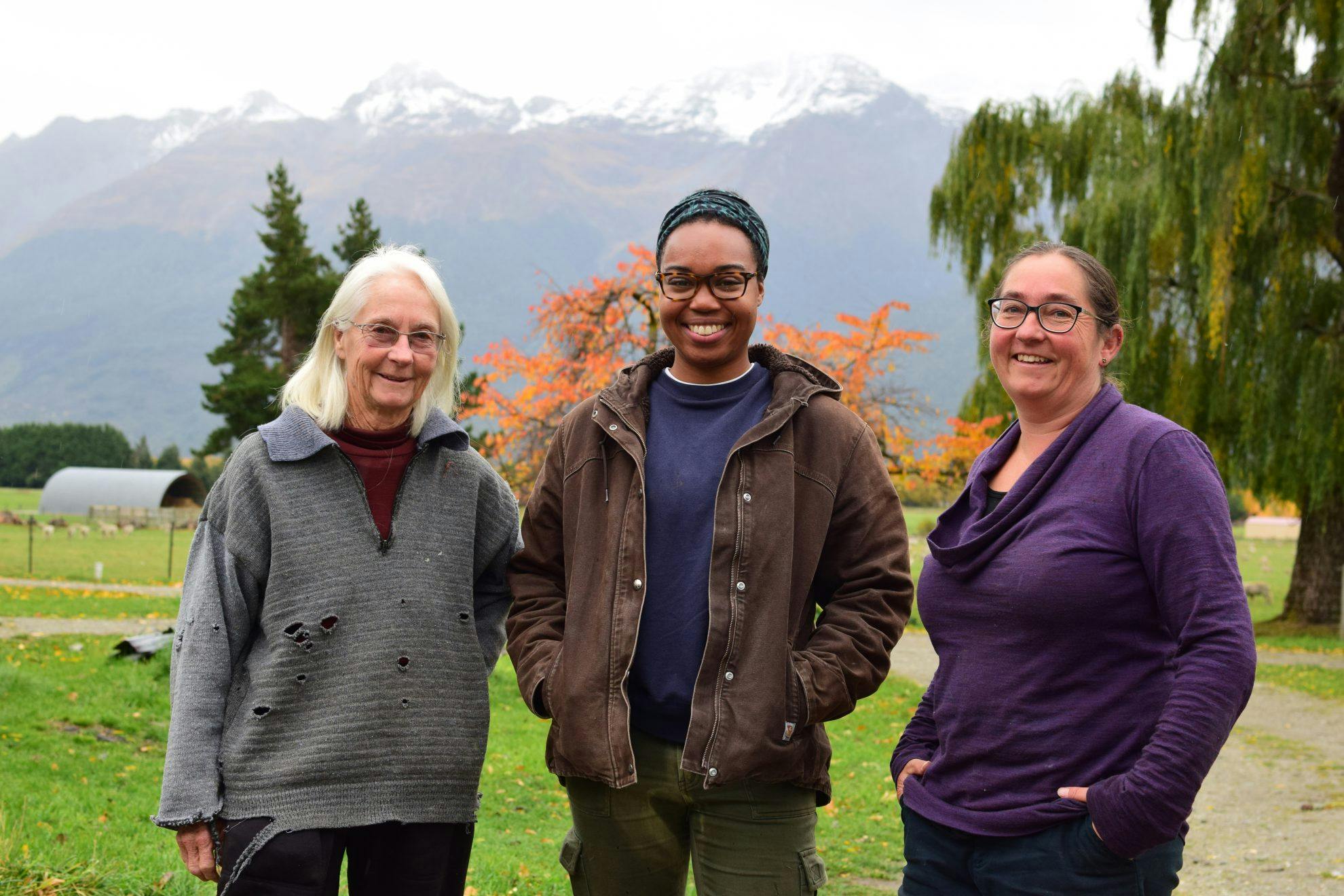
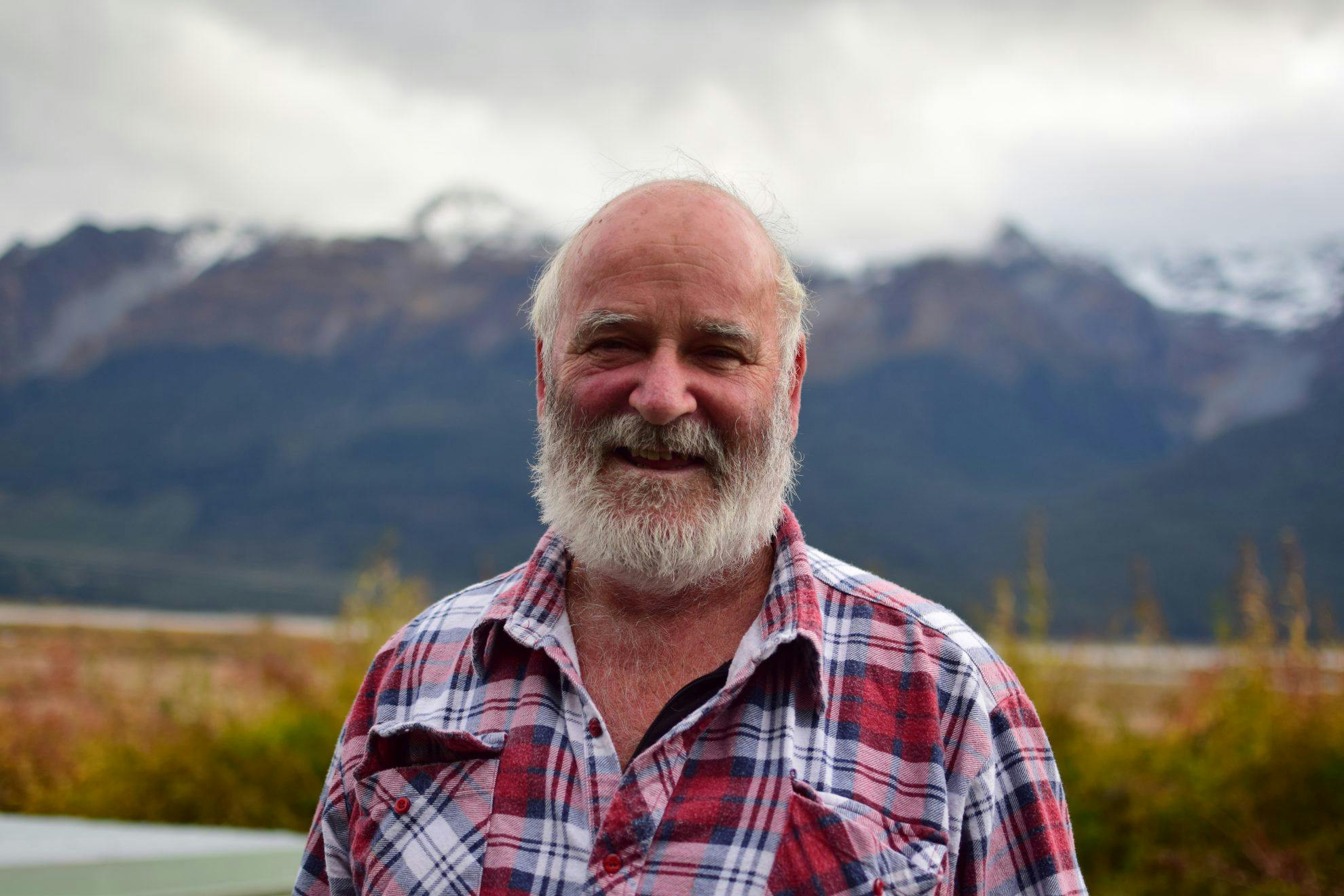
Tragically, the historic Paradise House burned down after being struck by lightning in 2014, just four years after the building was restored thanks to community fundraising.
“It was devastating – we weren’t sure what to do. But Paradise has always been more than just a building.”
The chimneys are still standing – the ruins now forms a courtyard – and nearby historic buildings have been renovated to cater for guests.
Beyond the historic tramping lodges, the high country stations of Glenorchy are also an integral feature of the region’s iconic tracks, many of which traverse working farms.
Not far from the start of the Routeburn Track is the Routeburn Station homestead. Stu and Anne Percy have been managing the station for 36 years. They moved to Glenorchy after they saw an advertisement for a farm manager in the paper.
“We were managing a farm near Lawrence and we thought we’d come here for three years,” Anne recalls. “We never left.”
A decade later, a treaty settlement with Ngai Tahu saw Routeburn Station amalgamated with neighbouring Greenstone and Elfin Bay stations and the couple found themselves managing a colossal 36,000ha.
But you get the sense some things don’t change in Glenorchy. When Wilderness visited, Stu was on a week-long cattle muster, riding on horseback from Mavora Lakes, through the Greenstone Valley and back to the Routeburn.
“We both like having a lot of space and we love it here,” Anne says. “It’s a tight community – always has been. But as it gets bigger it has changed dramatically. When a town is small, it is very diverse and everyone interacts, but as it gets bigger, people start to get into their own set groups, which is a shame.
“Now I go into town and I don’t know anyone.”
With the busy gravel road to the Routeburn Great Walk running past their front gate, the tourism boom has literally come to their door.
“In the last five years, it’s like the world’s found Glenorchy. The whole of Central Otago is barely coping.”
But it has also created opportunities. They have recently started renting out a cottage on the property to holiday-makers and it’s been booking out.
Across the valley is Rees Valley Station, which runs almost to the head of the Rees River, including the start of the popular Rees Track. The farm has been run by the Scott family almost continuously since 1905 and is currently managed by Iris Scott and her daughter Kate.
Iris married into the family in the 1960s. After leaving Auckland to study to be a vet at Massey University in Palmerston North, she did a six-week job placement at the station 51 years ago – her first time in the South Island.
“My first impression of the area was that it’s pretty much a desert. I remember looking around and asking ‘what do the sheep eat?’.”
She was picked up in Queenstown by her future mother-in-law and began a life-long connection with the alpine terrain.
Kate, on the other hand, grew up on the farm, and always thought her future was in Glenorchy.
“I always thought I would be here, from a very young age.”
But she insisted on getting an education first and studied English literature and art history at the University of Otago.
“It’s important, growing up on a family farm, to know something different. You’ve got to get out of your comfort zone, know what else is out there so you can make an informed decision.”
Iris says Glenorchy has always been a diverse and educated community.
“When I came here, all of the farmers had a tertiary education and there is a huge range of skill-sets and backgrounds.”
Having such a strong and long connection to the area, the Scotts are also acutely aware of how it is changing. But they say it’s nothing new.
“People who have been here 10 or 15 years are now complaining about all the new people coming and the changes that are happening, but we think ‘that’s what we thought when you arrived’,” Iris says.
“For any community, having no change is a death sentence,” Kate adds. “But the speed and degree of change is key. It’s a bit of a new gold-rush experience.”
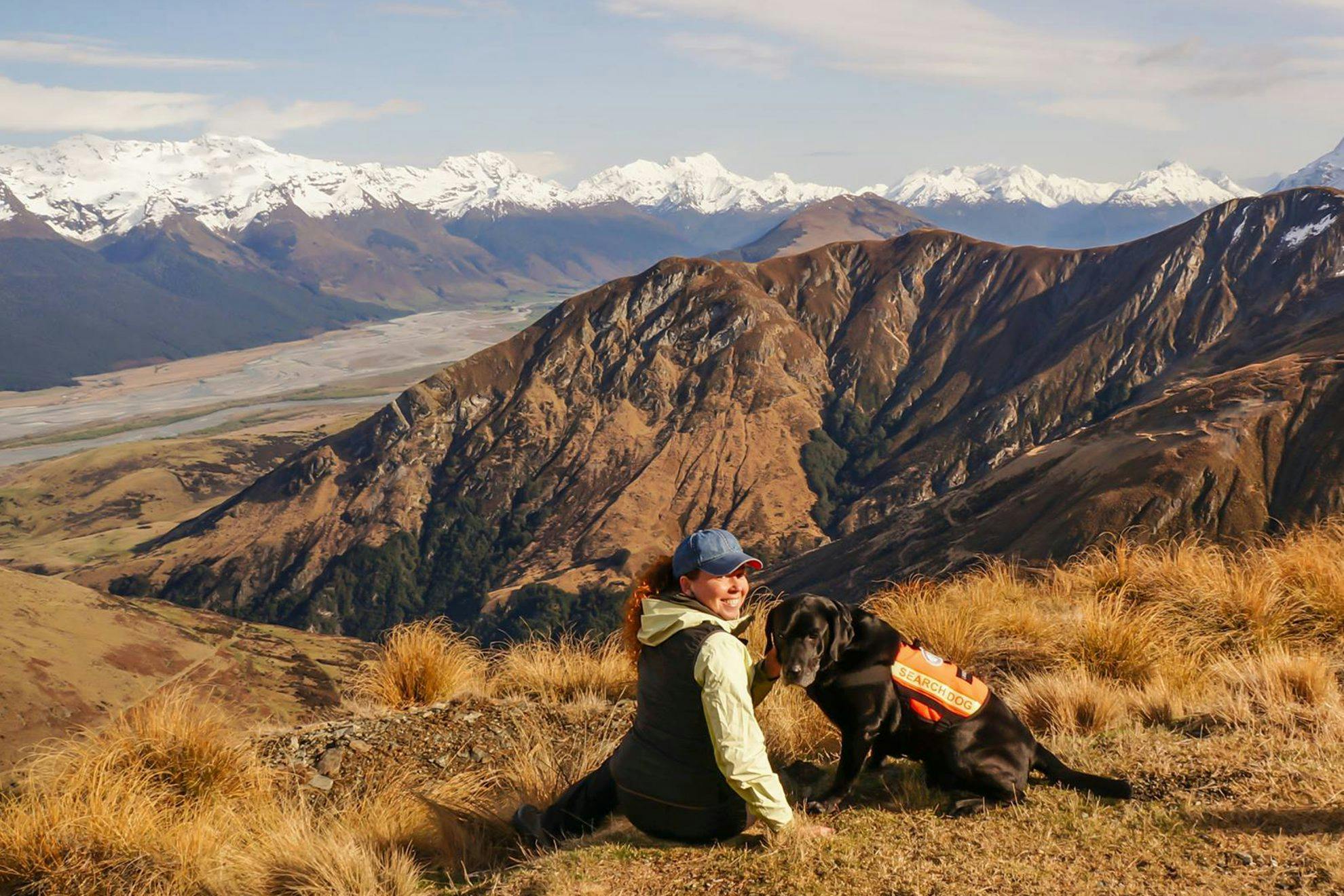
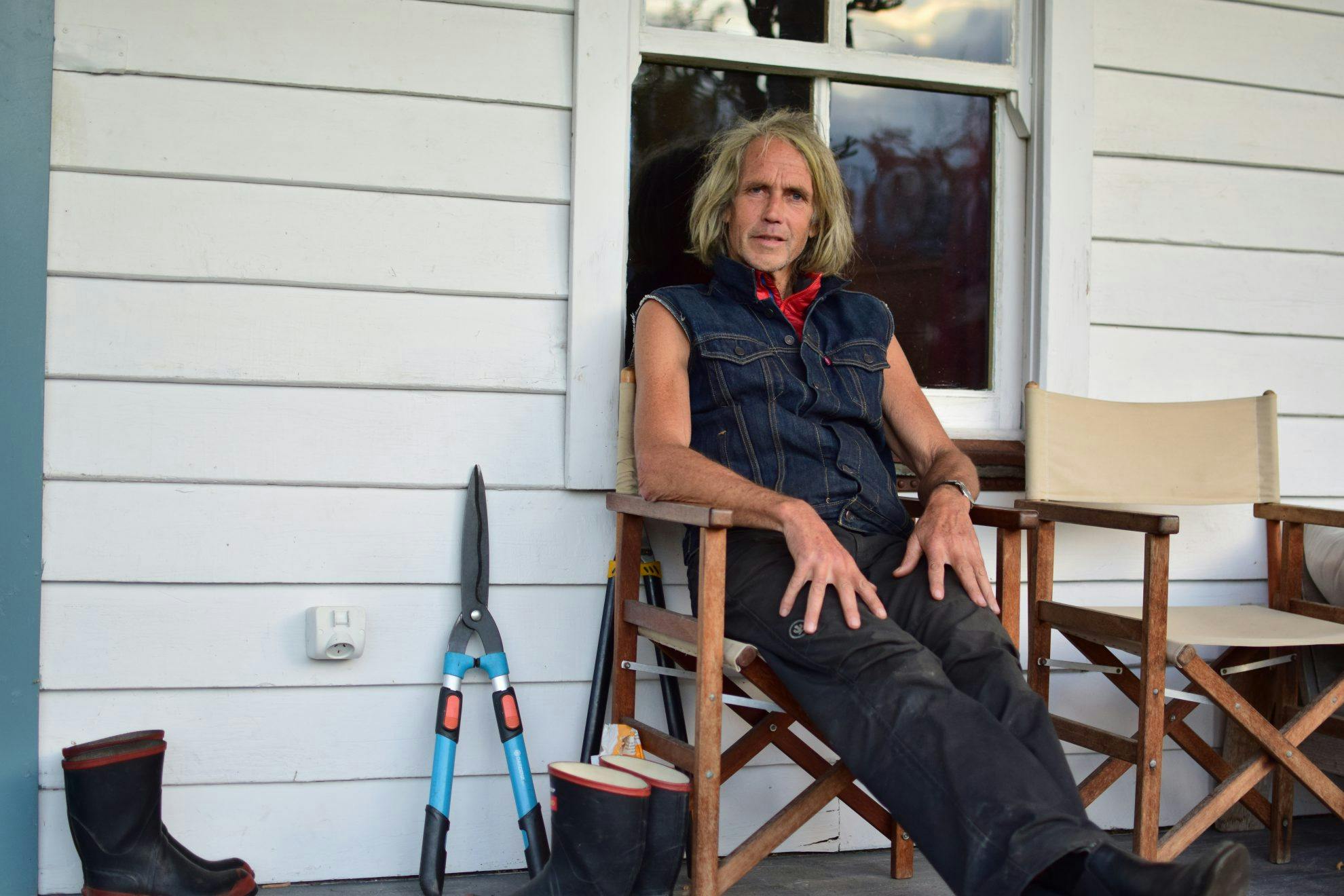
Glenorchy has also long had an international flavour – attracting people from around the world who have come for the landscape, freedom and adventure.
Vladka Kennett moved to New Zealand from the Czech Republic 16 years ago and runs a tourism business for Czech travellers. After living in Queenstown, she moved to Glenorchy to be closer to the mountains and runs a bed and breakfast.
“I love it here. I love the small community feel. People rely on each other and get involved in volunteer activities and pitch in.
“It’s a really accepting, vibrant and colourful community. For just 300 people, it’s amazingly diverse, with people from all over the world and all sorts of backgrounds.”
Kennett runs the town’s community website, volunteers for Wakatipu Search and Rescue, is Honorary Consul of the Czech Republic in NZ, and is a professional photographer.
Working a variety of jobs is a common feature of Glenorchy-folk.
John Henderson moved to Glenorchy in 1977 to “make a fortune out of possuming” when he was 21. While the possum jackpot never quite eventuated, he has made a life for himself in the town as a builder. He’s done so much work on the huts, tracks and bridges in the area that he’s one of DOC’s most sought-after builders.
He says when he first moved to the area, it was a paradise for exploration. But slowly, that sense of open country with free access has been lost.
“It was good for hunting and fishing and you could go wherever you liked in those days,” Henderson says. “It’s a lot more restricted now.”
The spillover of tourists from Queenstown has also affected the community feel, he says.
“It’s pretty hard on a small community getting 10 or 20 times the population through each day in summer.
“But I wouldn’t live anywhere else.”
Dan Kelly has also made a living through his entrepreneurial spirit. After working as a guide and a clothing designer for AJ Hackett, he moved to Glenorchy in 1992.
“I was attracted to the adventure playground here, and I wanted to raise my family in village life,” Kelly says.
During the winter, he runs ski tours from a private mountain hut he built on Mt Larkin in Whakaari Conservation Area. He has also become a successful artist. He started out by designing signage for local businesses and moved into abstract sculpture and sells about half of his work to overseas clients.
He has welcomed the growth of the town.
“The town’s filling up with people, but as a town should. It’s better than lifestyle blocks spreading to the end of the valley. We don’t mind one bit.”
But Kelly believes tourism needs to be more sustainable.
“There’s a backlash to tourism. A lot of people say the whole Southern Lakes area is at capacity, the numbers are projected to keep increasing, and yet the marketing goes on.
“It’s easy to grow tourism. It’s harder to plan and control it. It would be great if we had more confidence to choose what type of tourism fits the nation.”
Toni from Kinloch Lodge agrees it’s time for a more refined style of tourism.
“We’ve got to attract the right sort of customer – low impact visitors like cyclists and fisherman who appreciate and respect the environment of this area and share Glenorchy’s values.”
Part of Toni’s vision involves rekindling the past – bringing tourists up the lake by boat. A new 187-berth marina is being built in Frankton, which she hopes will lead to a commercial ferry to Glenorchy. If so, it would make it easier to manage visitors and reduce traffic and parking issues.
Glenorchy is already moving in a new direction. The town’s campground has been developed into a world-leading facility, showcasing the cutting-edge of sustainable building. The development includes a backpackers, private cabins and a campground, has been called the most sustainable campground in the Southern Hemisphere. Built by billionaire Seattle-based couple Debbi and Paul Brainerd, it is said to have cost tens of millions of dollars.
Visiting Camp Glenorchy feels like stepping into the future, but with a strong connection to the past. There are 1600 sensors on the property, controlling the LED lighting and heating. It’s powered by a 432-panel solar farm – one of the largest in the country. It is heated by a geothermal heat-pump; the buildings are triple-glazed and the walls are insulated with recycled materials. The toilets are composting – the compost is re-used on-site. Rainwater is collected from the roof and the wastewater is treated and reused. Many of the building materials have also been recycled from buildings demolished after the Christchurch earthquakes, giving the place a rustic charm. Local artists have adorned almost every surface – there’s a mosaic of river stones that mimics the path of the Dart River through the courtyard, and iron and driftwood sculptures adorn the common areas. This ethos flowed through to the construction – every piece of material that left the property to go to landfill was weighed and accounted for. But this comes at a price – a bunk in the backpackers will set you back $75 a night.
The development opened in March and it’s managed by two of Glenorchy’s newest residents, Tracy and Peter Kerr. Peter had been trotting the globe, managing high-end hotels in places like Sydney, Hong Kong, Maldives and the Himalayas. After moving back to NZ, they jumped at the opportunity to manage Camp Glenorchy.
Tracy explains it was built to show people what’s possible in building sustainably.
“It’s like an education centre,” she says. “They’ve put as many sustainable products into it as they could.
“We’ve had so many builders and architects come through – we’ve had eight tours today.”
It’s not the approach you’d take if you were out to make money. But then Camp Glenorchy isn’t out to make money. Any profits are returned to the community, to be spent by a community trust.
Having lived a globe-trotting lifestyle, how do they find settling into Glenorchy?
“We love it here,” Tracy says. “The beauty is simply amazing and it’s a great small community.”
Taking up nearly a block at the entrance to the town, the camp caused some residents to bristle at how it would change the face of Glenorchy. But now it has opened, most residents seem to be impressed. Tracy says development was inevitable.
“When you’re living so close to the biggest tourism centre in the country, you have to expect one day it’s going to start spreading. In summer, there are 5000 cars coming to Glenorchy a day – they need somewhere to stay.”
But as the town evolves, the mountains and natural values that attract people remain. Hopefully trampers will still be able to find an alpine valley to themselves in 150 years time.





